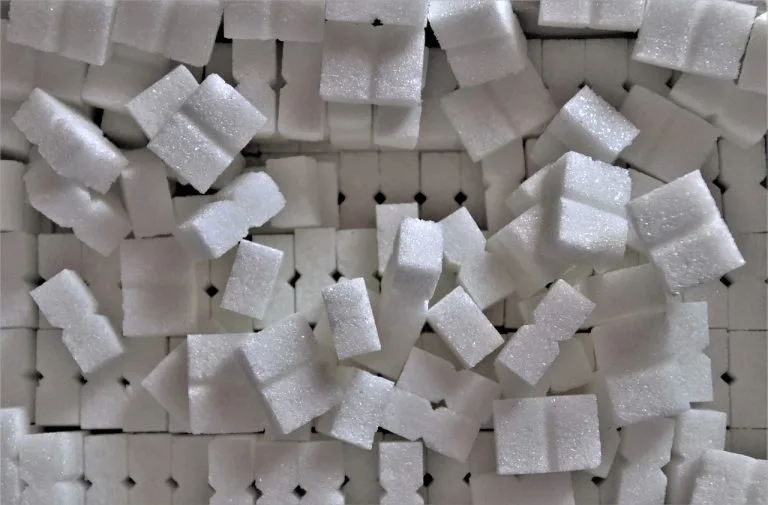Key Takeaways
- Global sugar prices are experiencing a sharp decline, with key benchmarks in New York and London reaching multi-year lows.
- Overarching expectations of abundant global sugar supplies, particularly from major producers like Brazil and India, are driving prices down.
- Brazil’s Center-South region has reported an uptick in sugar output and sugarcane processing, contributing to a surplus outlook.
- India’s monsoon season has been favorable, pointing towards a potentially large harvest and increased export capacity, further dampening market sentiment.
- While some previous forecasts pointed to deficits, recent projections now indicate a significant global surplus, impacting market sentiment.
Sugar Market Faces Sharp Decline Amidst Surplus Forecasts
Sugar prices have entered a significant downturn, with the March NY world sugar #11 contract (SBH26) experiencing a notable drop and the December London ICE white sugar #5 contract (SWZ25) also declining. This price action has pushed New York Sugar to its nearest-futures low not seen in 4.5 years, while London sugar has hit a new 4.25-year low. The primary catalyst for this downward trend is the anticipated surge in global sugar supplies for the upcoming season.
Analytical firms are projecting a substantial surplus for the upcoming season. For instance, BMI Group estimates a global sugar surplus of 10.5 million metric tons (MMT) for the 2025/26 period. Covrig Analytics offers a similar outlook, projecting a surplus of 4.1 MMT for the same timeframe. These forecasts are exerting considerable downward pressure on current sugar prices.
Brazilian Production Surges, Bolstering Global Supply Expectations
Indications of increased sugar production from Brazil have been a persistent factor weighing on sugar prices over the past seven months. Data from Unica reveals that in the latter half of September, Brazil’s Center-South sugar production saw a year-on-year increase of 10.8%, reaching 3.137 MMT. Furthermore, the proportion of sugarcane crushed for sugar by Brazilian mills during this period rose to 51.17%, up from 47.73% in the previous year.
Cumulative sugar production in Brazil’s Center-South region through September for the 2025-26 season also demonstrated growth, climbing by 0.8% year-on-year to a total of 33.524 MMT. This robust output from one of the world’s largest sugar producers is significantly contributing to the growing global supply surplus outlook.
India’s Potential Record Harvest and Enhanced Export Capacity
The prospect of increased sugar exports from India is another key element contributing to the bearish sentiment in sugar prices. Favorable monsoon rains across the country have heightened expectations for a substantially larger sugar crop in the 2025/26 season. Data from India’s Meteorological Department on September 30 indicated cumulative monsoon rainfall at 937.2 mm, which is 8% above normal, representing the strongest monsoon in five years.
This favorable weather scenario has led to optimistic production forecasts. India’s National Federation of Cooperative Sugar Factories projected on June 2 that the country’s 2025/26 sugar production could surge by 19% year-on-year to 34.9 MMT, driven by an expansion in sugarcane acreage. This projected increase follows a significant drop in India’s 2024/25 sugar production, which fell to a five-year low of 26.2 MMT, according to the Indian Sugar Mills Association (ISMA).
Adding to the bearish outlook, sugar trader Sucden has indicated that India might divert 4 MMT of sugar for ethanol production in the 2025/26 season. However, this volume may not be sufficient to absorb the country’s projected sugar surplus, potentially leading Indian sugar mills to export as much as 4 MMT, surpassing earlier expectations of 2 MMT. As the world’s second-largest sugar producer, India’s export capacity plays a crucial role in global market dynamics.
Outlook for Thailand and International Projections
The outlook for increased sugar production in Thailand also presents a bearish factor for global sugar prices. On October 1, the Thai Sugar Miller Corp projected that Thailand’s 2025/26 sugar crop would rise by 5% year-on-year to 10.5 MMT. This follows a significant 14% year-on-year increase in Thailand’s 2024/25 sugar production, which reached 10.00 MMT, as reported by Thailand’s Office of the Cane and Sugar Board on May 2. Thailand’s role as the world’s third-largest sugar producer and second-largest exporter means its production levels have a notable impact on market prices.
In contrast to some of the current surplus forecasts, the International Sugar Organization (ISO) had previously anticipated a global sugar deficit for the 2025/26 season, which would have marked the sixth consecutive year of shortfalls. The ISO projected a deficit of -231,000 MT for 2025/26, a reduction from the -4.88 MMT shortfall expected in 2024/25. The ISO also forecast a 3.3% year-on-year increase in global sugar production to 180.6 MMT, with global sugar consumption rising by 0.3% year-on-year to 180.8 MMT in 2025/26.
USDA Forecasts Record Production and Shifting Stock Levels
The U.S. Department of Agriculture (USDA), in its bi-annual report released on May 22, presented projections that diverge from the current prevailing market sentiment. The USDA forecasted that global 2025/26 sugar production would climb by an impressive 4.7% year-on-year to a record 189.318 MMT. Concurrently, global human sugar consumption was expected to increase by 1.4% year-on-year to a record 177.921 MMT in 2025/26.
The USDA report further predicted that 2025/26 global sugar ending stocks would rise by 7.5% year-on-year, reaching 41.188 MMT. Specifically, the USDA’s Foreign Agricultural Service (FAS) predicted a 2.3% year-on-year increase in Brazil’s 2025/26 sugar production to a record 44.7 MMT. The FAS also forecasted India’s 2025/26 sugar production to grow by 25% year-on-year to 35.3 MMT, attributed to favorable monsoon rains and increased sugar acreage. Thailand’s 2025/26 sugar production was predicted by the FAS to increase by 2% year-on-year to 10.3 MMT.
Expert Summary
The global sugar market is currently characterized by a sharp price decline, driven primarily by robust forecasts for increased supply from major producing nations like Brazil and India. While some earlier projections indicated potential deficits, a confluence of favorable weather and expanded acreage in key regions now points towards a significant global surplus. This shift in supply outlook, supported by differing projections from international bodies and the USDA, highlights the dynamic nature of the sugar market.

